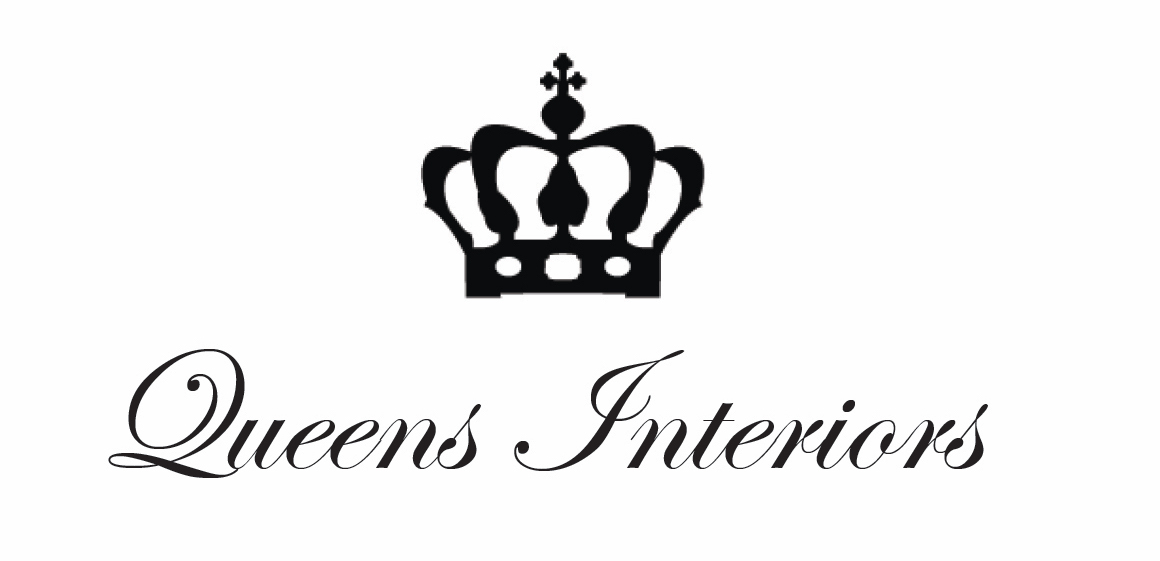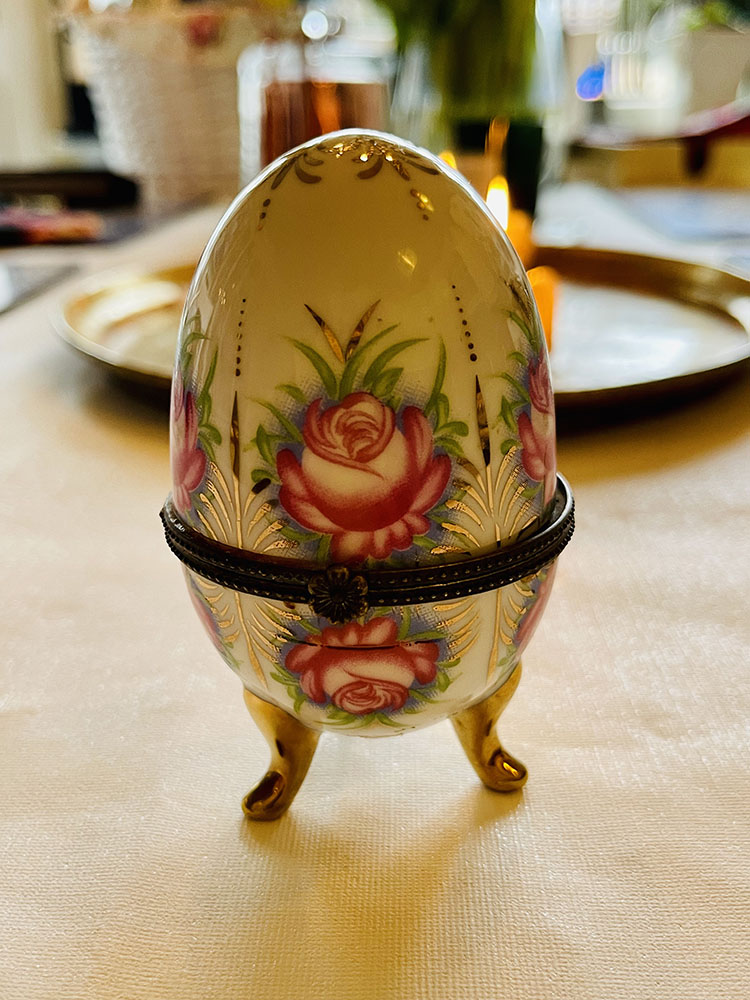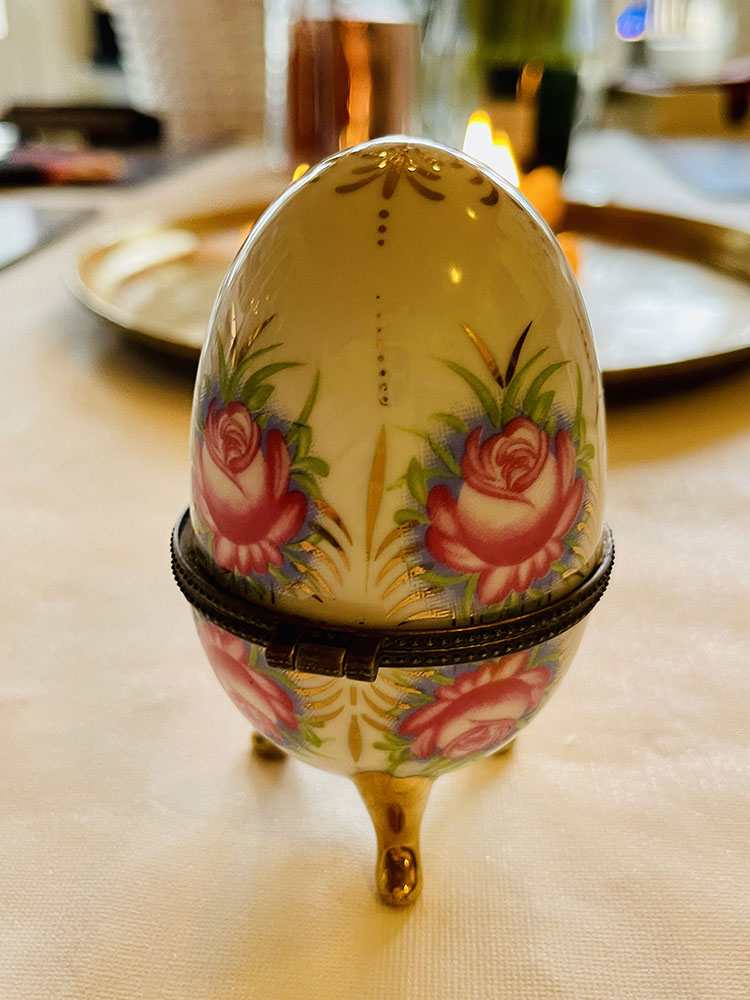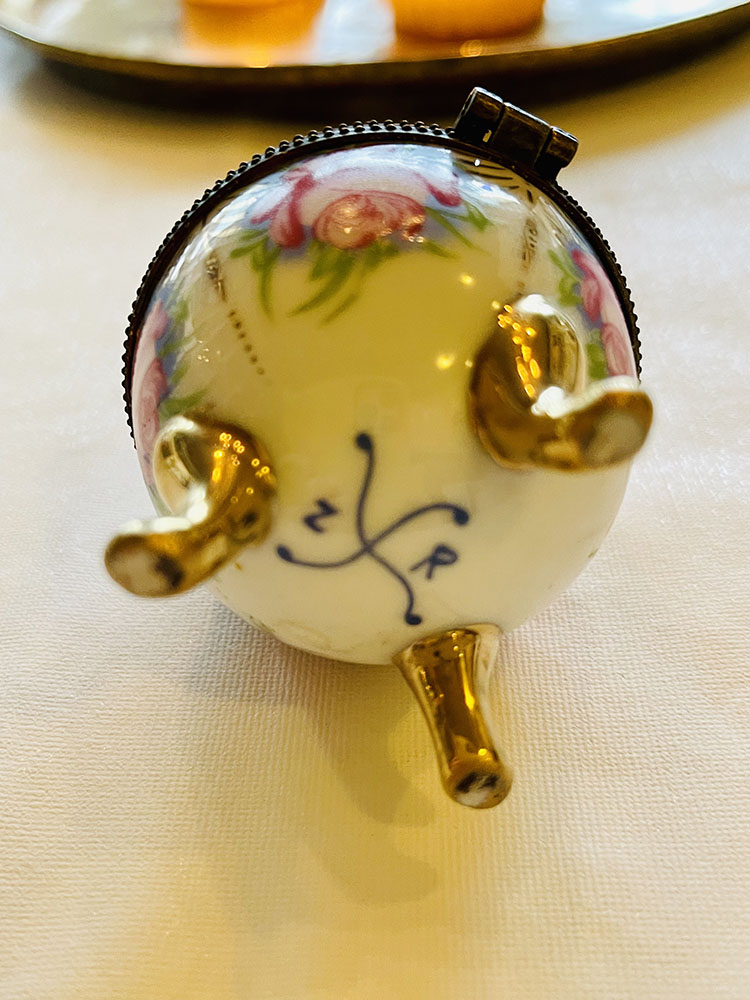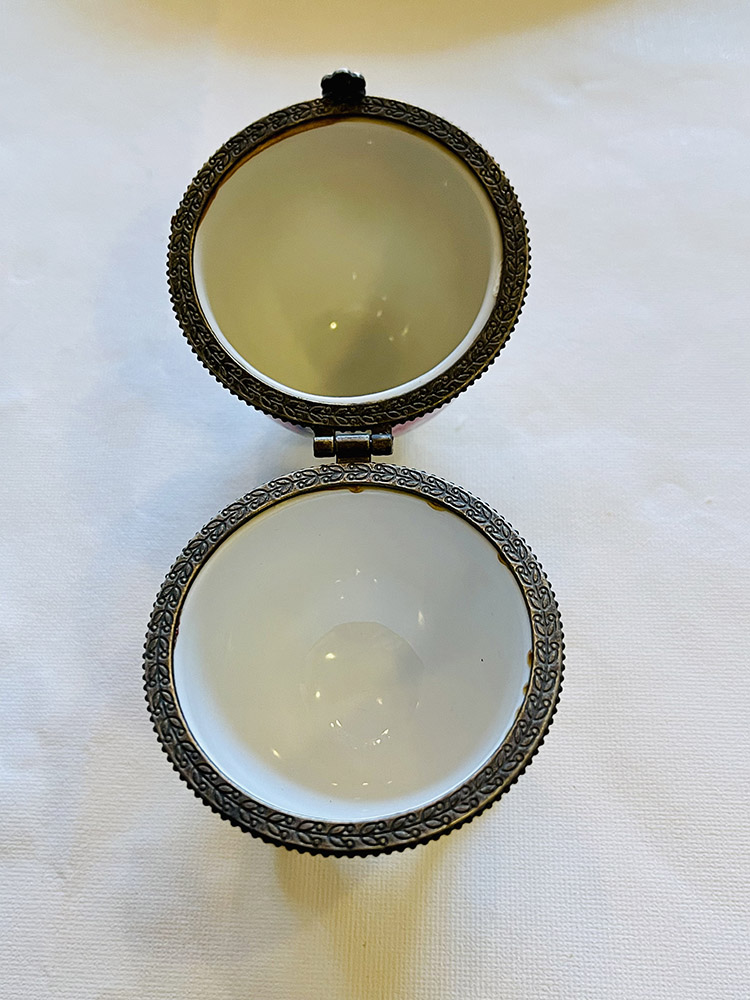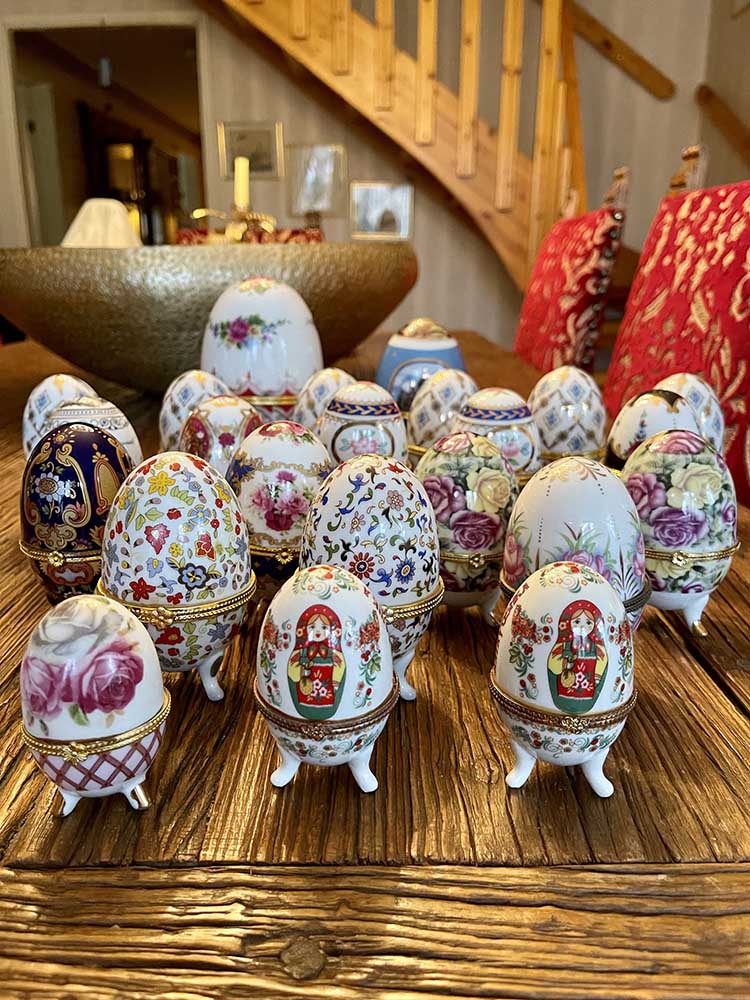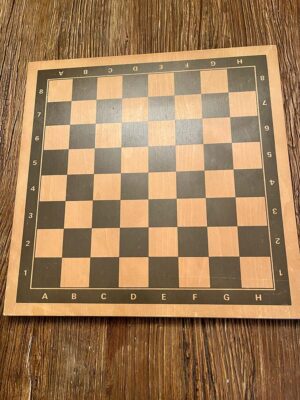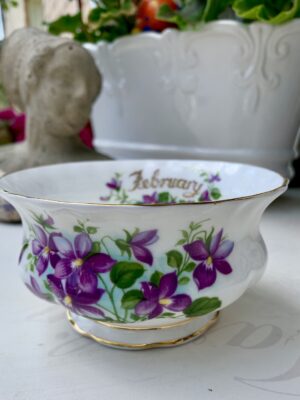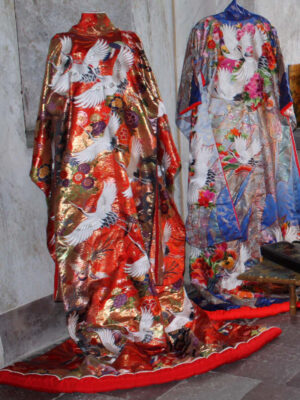Beskrivning
Det här ett av våra Ryska vintage porslins ägg. Traditionen med ägg har en lång mytisk tradition och det representerar nytt liv. Framför allt förknippar man det med den ortodoxa kyrkan och firandet av påsken. . Det sägs att traditionen är mer än 1000 år i Ryssland. Det finns olika sorters ägg och en sort är de målade trä äggen , en annan är ägg i glas, en ytterligare sort är de här porslinsäggen och sist men inte minst de berömda Faberge’ äggen. De startade med Tsar Alexander III som beställde ett ägg till sin fru Maria Fyodorovna och sedan fortsatte traditionen inom familjen . Eftersom de var mycket dyrbara så var det bara adel och rika borgare som också kunde beställa de här exklusiva äggen. Vilka underbara påskgåvor.
Det här ägget är i porslin med en stängnings anordning i oxiderad metall. Dekoren är ganska typiskt rysk, och det finns ett märke som tyvärr inte verifierar ursprunget, men jag har sett att det är ganska vanligt förekommande på just porslinsägg. Ägget är ca 10 cm högt och mäter 6 cm i diameter. Det är svårt att säga exakt hur gammalt det är , men de flesta är från 1960-talet och framåt. Just det här ägget tror jag är ett av de äldre. Ägget är i mycket fint vintage skick.
